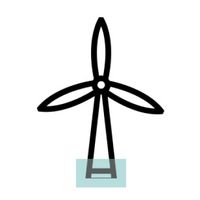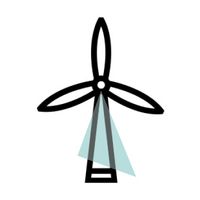Removal Concept for Wind Turbines: Blasting is the Fastest Way
For operators, removing wind turbines is not a question of wanting to, but of having to. After all, the legislator stipulated in Section 35 of the Building Code that the regulation for the dismantling of a wind turbine must already be part of its approval. The exact form varies from state to state, but one thing is clear: anyone who places a wind turbine in the landscape must remove it after it has ceased operation.
Wölfel Engineering – with decades of experience in the dismantling of complex plants – supports operators of wind turbines in the rapid and safe demolition by blasting.
At a glance: our services around the blasting of wind turbines
- Blast demolition concept with static evaluation of the required pre-weakening in compliance with DIN SPEC 4866:2020-10
- Consulting in the event of an accident in order to remove the damaged wind turbine as quickly as possible
- Guarantee of accurate planning and dimensioning so that the tower falls precisely
- In more complex cases, use of software-based simulations to ensure the greatest possible safety
- Assessment of blast effects on the neighborhood, including vibration prediction and evaluation according to DIN 4150-3
- Design of protective measures for the surrounding area if required
- Vibration measurement during blasting in order to be able to deal objectively with any complaints from the surrounding area with the aid of exact measurement data
Removing wind turbines: when and why blasting makes sense
The move for wind turbines to date has been “the higher the better”. Whereas until the end of the 1990s the average hub height was still far below 100 meters, it is now at around 135 meters for newly erected turbines. The world's tallest wind turbine has a hub height of 178 meters (as of July 2021).
At these dizzying heights, classic cable excavators reach their limits and (manual) dismantling with cranes is tedious. With the help of blasting, the entire wind turbine can be brought to ground quickly and safely, where it can then be crushed and transported away.
In addition, the higher the structure, the more massive the foundation. Accordingly, shallow foundations consisting of more than 800 m³ of reinforced concrete are not uncommon. In the case of these heavily reinforced foundations, which present a particular challenge during removal, blasting to loosen the structure also accelerates the process immensely.
Especially when a wind turbine is to be replaced by a newer model, blasting is worthwhile – the time saved during demolition allows the higher yields of the new wind turbine to flow more quickly and multiplies if several turbines are to be demolished at the same time.

Foundation removal by blasting
- Acceleration of foundation removal by blasting to loosen the structure
- This results in a shorter period of immissions, meaning less dust, noise and vibrations
- Blasting facilitates the separation of the reinforced concrete structure, which simplifies recycling
- From around 250 cubic meters, blasting is generally cheaper than mechanical demolition

Tower removal by blasting
- Significantly faster removal than by dismantling or using mechanical methods
- Due to so-called "blast folding" (tower folds in on itself), significantly reduced impact on the surrounding area
- Even faster removal when using "falling direction blasting" (tower falls over lengthwise)
- Removal by blasting usually does not affect the continued operation of surrounding wind turbines
- Worthwhile for both damaged and very tall wind turbines from an economic and ecological point of view
Demolition of a wind turbine by blast folding
Please contact me personally
________
Contact us now for a non-binding initial consultation to find out whether blasting is the right solution for the removal of your wind turbines.
Civil Engineering (Bachelor), University of Applied Sciences Würzburg-Schweinfurt
Civil Engineering, specialisation "Numerical Methods of Structural Analysis" (Master), University of Kassel
M.Sc.
Guest at the Working Group 1.4 Soil Dynamics of the DGGT (German Society for Geotechnics)
Guest at the Expert Committee for Blasting Technology of the Deutschen Abbruchverband e.V. (German Demolition Association)
![[Translate to English:] Zerstörte Windenergieanlage [Translate to English:] Zerstörte Windenergieanlage](/fileadmin/_processed_/8/4/csm_WEA_destroyed_3000x575_a6cf9ea2cc.jpg)

![[Translate to English:] [Translate to English:]](/fileadmin/_processed_/9/a/csm_Windenergie_01_Schall-laerm_1000_875_a53e13e186.jpg)



![[Translate to English:] [Translate to English:]](/fileadmin/_processed_/e/e/csm_Windenergie-SHM-Blade-Onshore-Kachel_2a42f3422c.jpg)